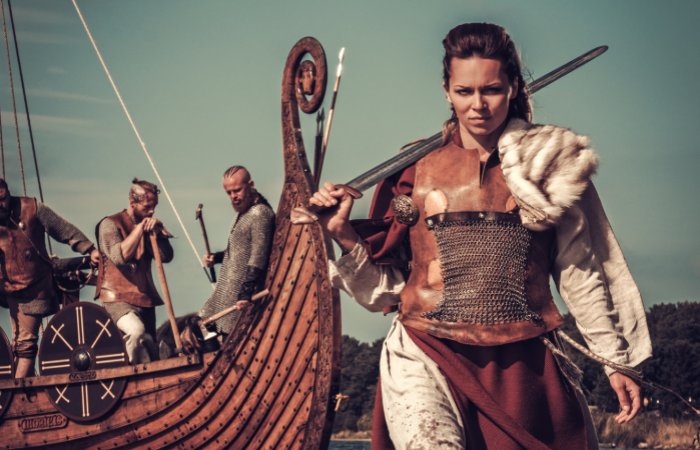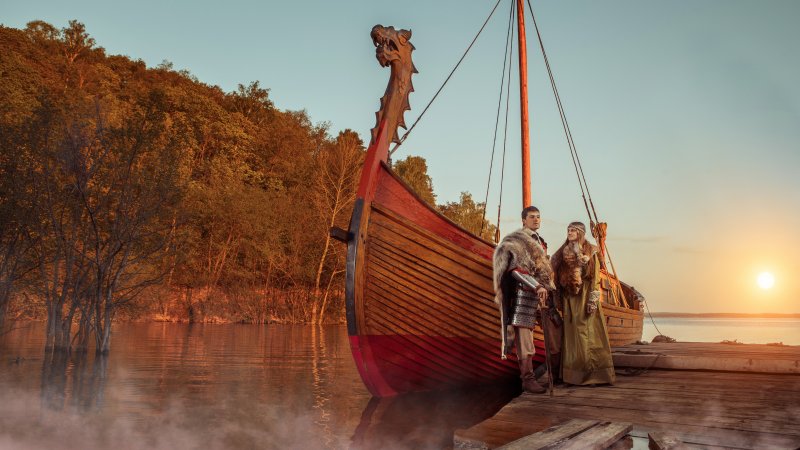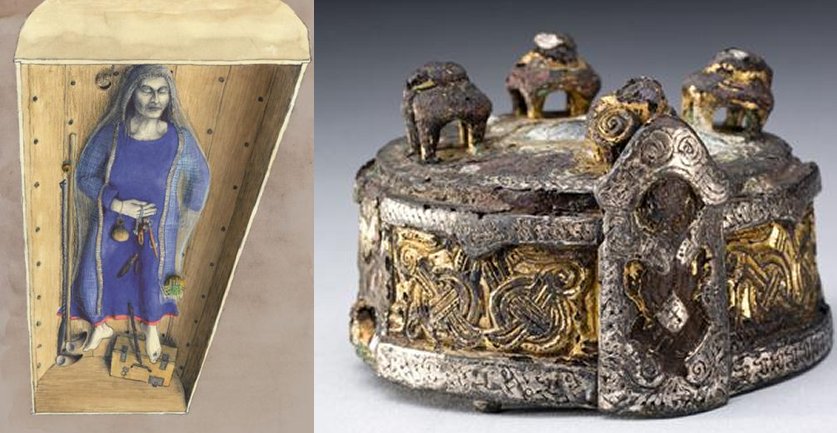Ellen Lloyd – AncientPages.com – Unlike many females in other ancient cultures, Viking women were powerful, dominant, and had a prominent role in society.
This Viking legacy is still notable in Scandinavia, where women expect to be treated as equals. Scientists have acknowledged Viking women were much more prominent than previously thought based on numerous archaeological discoveries.

A Viking woman was strong and independent. Credit: Adobe Stock – Nejron PH๏τo
Viking Women Participated In Wars
Archaeologists have discovered many graves that contain remains of female Viking warriors.
“It was long ᴀssumed that the ancient tomb in the Viking town of Birka belonged to a man of great military importance. Later, comprehensive DNA studies revealed the Birka warrior was, in fact, a woman.
The Birka tomb is not the only example showing women who often participated in battles during the Viking Age. There are many similar tombs in Sweden, Norway, and Denmark that offer physical evidence of female Viking warriors.” 1
Crossing the path of shieldmaiden Freydis Eiriksdottir, the H๏τ-tempered daughter of Erik the Red, could lead to death easily.
A Viking Woman Could Choose Her Husband
We have discussed the importance of marriage and divorce in the Viking society before. For now, let us say that marriage in Viking society was not forced upon women.
A Viking woman had the right to choose her husband, and she had the right to file for a divorce if she was unhappy. According to the Icelandic Sagas, several rules guaranteed Viking women substantial legal rights.
“For example, a woman could file for divorce if she had been abused three times or Sєxually neglected for three years.” 2
Viking Women Did Inherit And Could Become Traders Or Business Partners
It cannot be denied that Viking men often preceded women as heirs, but a woman could inherit vast areas of land or a large amount of money.
“A variety of evidence confirms that women could, and a not-insignificant percentage did, become considerable landholders. They could also become traders and business partners.
One of the main Scandinavian ventures on the North American continent was significantly bankrolled by a woman – a woman who moreover betook herself on the journey. (During the American winter, she is said to have driven her husband to murder several companions while she herself took an axe to their wives.

Viking women often sailed with their husbands and they could become traders or business partners. Credit: Adobe Stock – diter
It may well be that even that most macho of early Scandinavian business activities, organized piracy (“Viking” in the proper sense of term) was practiced by women. The War of the Gaedhil with the Gaill refers twice to a “red girl” who headed up a Viking band in Ireland and invaded Munster in the tenth century, and as any reader of literature knows, there are numerous legends of “fierce and imperious women”. 3
All these numerous legends are so consistent that scholars long suspected they must have some basis in reality, and indeed they do.
We should not forget that Mythical shieldmaidens did exist, and archaeologists have found evidence that female fighters might have roots in actual historical events.
Viking Men Helped With Household Duties
Being fierce warriors, one can easily imagine how Viking males returned home after raids and spent their resting. This may have been done, but Viking males were afraid of household work and helped women cook, bake, and clean the house.
Archaeologists have discovered Viking Age graves in which men and women have been put to rest with the same kitchen tools, which clearly demonstrates gender equality.
Norse Female Shamans Held A High Rank In The Society
Women who engaged in sorcery held a high status in Viking society. They were respected because they could predict the future, cure and cause illness, and help warriors on the battlefield with their magical power.
Some years ago, a very mysterious grave was discovered in Denmark. What is especially interesting about this particular discovery is that it seems this was the resting place of a Völva, who was a Norse female shaman.

Left: The buried seeress from Fyrkat – reconstruction drawing by Thomas Hjejle Bredsdorff. Image credit: National Museum of Denmark – Right: A so-called box brooch from Gotland was also present in the grave. The völva re-used the hollow brooch as a container for “white lead”. White lead is a white dye, which for more than 2000 years has been used in medicine – in skin ointments, for example. It is poisonous in its concentrated form. Image credit: National Museum of Denmark
Several puzzling ancient artifacts were found in the tomb, which indicates that whoever was buried here was by no means an ordinary person. Scientists could confirm the importance of women who practiced shamanism in Norse society.
Examining archaeological discoveries and stories describing Viking women indicates gender equality was widespread during the Viking Age.
Although men dominated ancient Scandinavia, it is evident that Viking women were strong and independent and had substantially more rights than women in other ancient societies.
Written by Ellen Lloyd – AncientPages.com
Updated on December 26, 2023
Copyright © AncientPages.com All rights reserved. This material may not be published, broadcast, rewritten or redistributed in whole or part without the express written permission of AncientPages.com
Expand for references
- Ellen Lloyd – Viking Women Were More Prominent Than Previously Thought – Archaeological Discoveries Reveal, AncientPages.com
- Världens Historia
- Clover, Carol J. “Regardless of Sєx: Men, Women, and Power in Early Northern Europe.” Speculum68, no. 2 (1993): 363-87. Accessed March 19, 2021. doi:10.2307/2864557.





